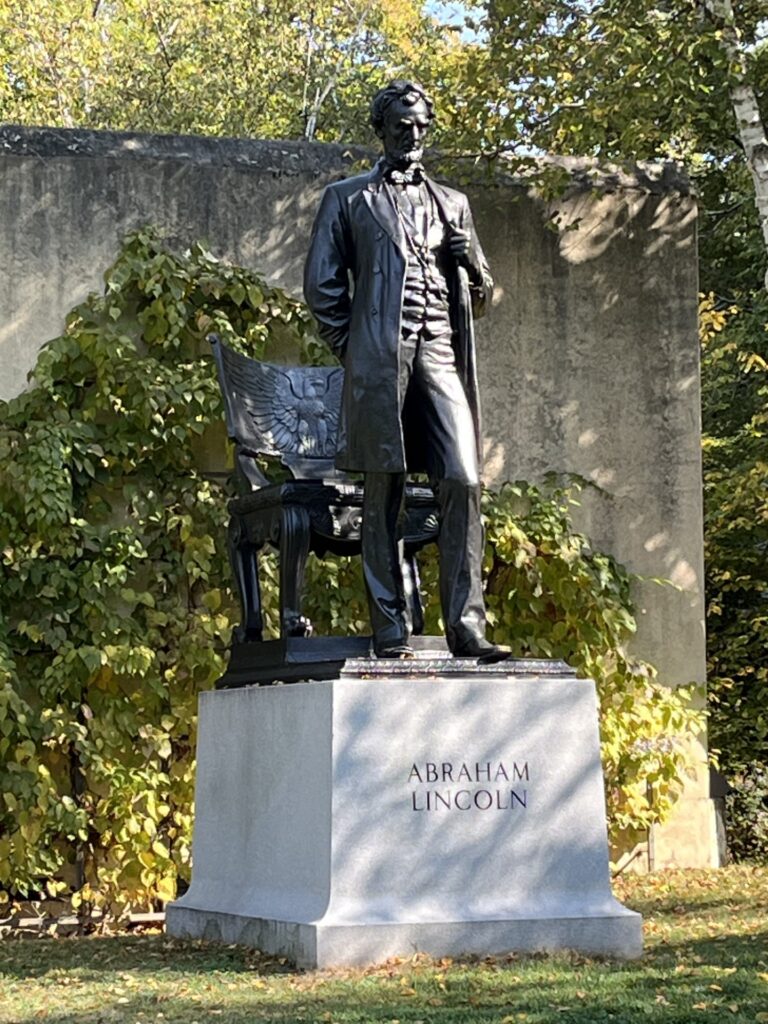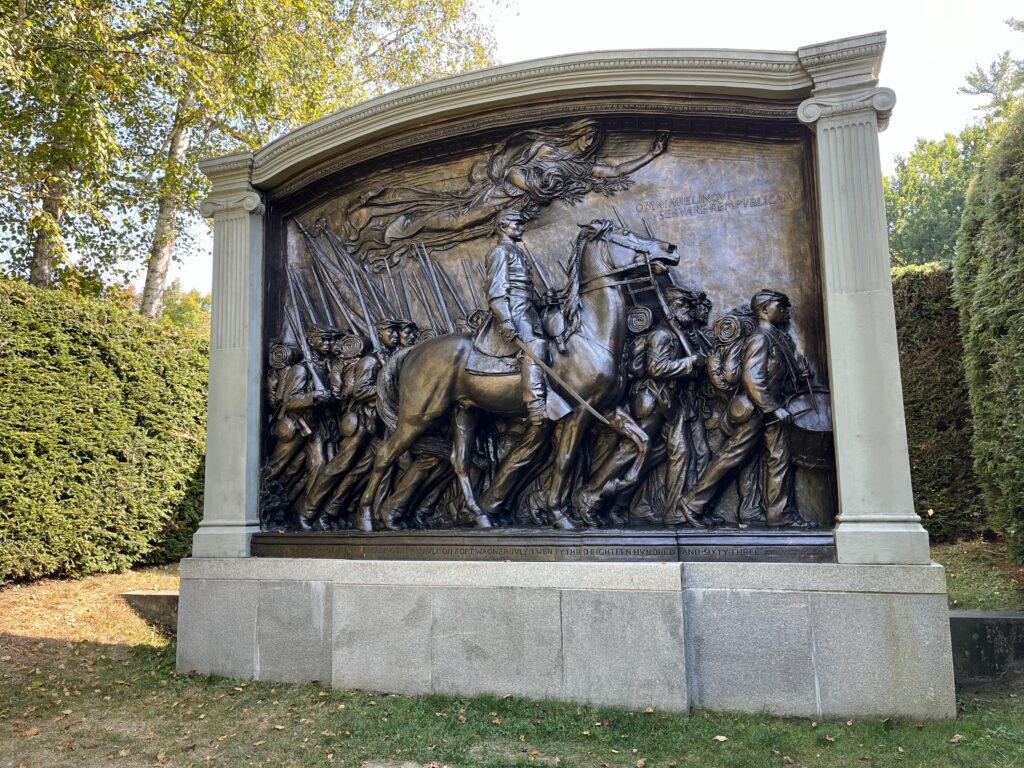It is the final stretch before the fall elections. Abraham Lincoln and Stephen A. Douglas have had joint debates in Ottawa, Freeport, Jonesboro, and Charleston, and Galesburg, plus each have given many dozens of individual speeches across Illinois. The final two joint debates occurred in quick succession in Quincy and Alton, two towns on the banks of the Mississippi River.

Quincy
On October 13, the two men took the stage in Quincy in what was then called John’s Square but today is Washington Park. Approximately 10,000 to 15,000 people crowded into the square, many of whom claimed to be “Old Whigs” like Lincoln, who considered Henry Clay – a long-time leader of the Whig party – his “beau ideal of a statesman.” Because they were alternating who spoke first in a format that gave each of them plenty of time to present their views (as opposed to today’s “debates” in which each is given a scripted 2-minutes to answer a moderated question), it was Lincoln’s turn to begin. He reiterated what he had said in previous debates, reminding everyone that Douglas kept lying about Lincoln’s views and the party platform. Lincoln also reiterated his belief, and the belief of the Republican party at the time, that slavery was a moral wrong that should not be spread.
“We [the Republican Party] also oppose it as an evil so far as it seeks to spread itself. We insist on the policy that shall restrict it to its present limits.”
Republicans would focus on blocking the expansion of slavery into the western territories but abide by constitutional constraints that did not authorize federal abolition of slavery in the states where it already existed.
When Douglas’s turn came to speak, he said that:
“I will not argue the question whether slavery is right or wrong. I tell you why I will not do it. I hold that under the Constitution of the United States, each State of this Union has a right to do as it pleases on the subject of slavery.”
Douglas also denied Lincoln’s insinuation that Douglas has conspired with others to make slavery permanent. This denial stemmed from the first debate in Ottawa, where Lincoln implied that “Stephen, Franklin, Roger and James” (i.e., Douglas, Pierce, Taney, and Buchanan) had secretly worked together to nationalize slavery. Having said it in Ottawa, Lincoln dropped the line from future debates because it was too conspiratorial and without evidentiary support (although clearly Buchanan and Taney had so conspired). That didn’t stop Douglas from denying it at every debate thereafter.
Today, a bas-relief frieze sculpture depicts the event, while a low wall on either side of the sculpture features six pairs of “Point/Counterpoint” quotes take from the debate.
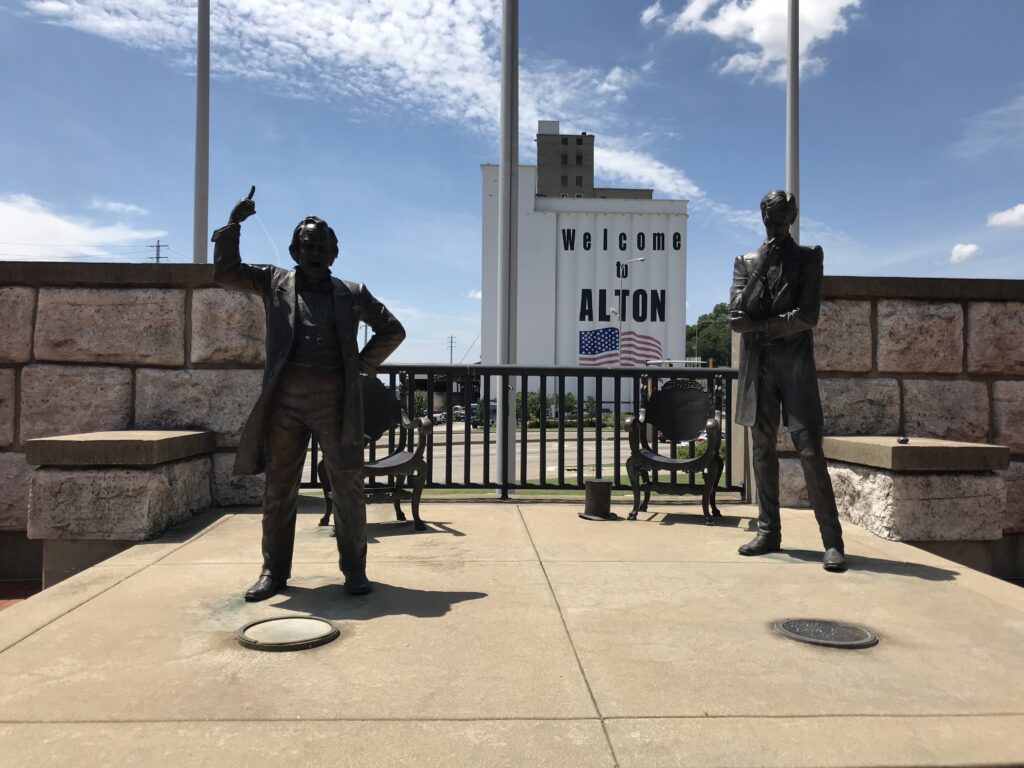
Alton
After Quincy, the two candidates hopped onto the same steamboat to travel to the next debate site in Alton. About 5,000 people gathered in front of the new city hall to hear the two men battle it out for one last joint debate. Many came from St. Louis, across the river from Alton, paying one dollar for each round-trip ticket. The Chicago and Alton Railroad offered half price fare from Springfield and elsewhere for those who wanted to attend the debate. Still, by this time most people had read about the debates in the newspapers, who had shorthand stenographers recording (more or less) verbatim what the two men were saying. The day was cloudy and fall weather was starting to settle in, which contributed to the lower turnout.
Douglas declared that the founders knew that the country had sectional differences and that they had deliberately left open the question of slavery for the states to decide.
“If they want slavery let them have it; if they do not want it, allow them to refuse to encourage it.”
Lincoln reiterated his “wish is that the further spread of it may be arrested, and that it may be placed where the public mind shall rest in the belief that it is in the course of ultimate extinction.”
The Alton city hall burned down in 1923, but life-size statues of Lincoln and Douglas stand on a platform of the site in commemoration.
Aftermath
The seven joint debates were critically important, although they didn’t change the almost certain outcome of the senate election. At the time, state legislatures chose senators [the 17th Amendment giving direct vote to the people wasn’t until 1913], and although Lincoln’s Republican party gained more votes, Democrats still dominated the Illinois legislature and thus selected the incumbent Douglas for another senate term. Unquestionably, Lincoln the vote counter knew his chances of winning the election under such a system was unlikely, but the debates made him a national figure. Lincoln made sure to collect the newspaper transcripts of all seven debates, which he had published in book form in the spring of 1860, thus reminding everyone of his and Douglas’s views on slavery. Because of the Freeport Doctrine – Douglas saying that any territory becoming a state could block slavery if it so wanted – the slave powers of the South would never support Douglas as the Democratic presidential nominee. That led to a split Democratic party in 1860, allowing Lincoln as the Republican nominee to win the election and become president.
And the war came.
[Photos of Quincy (top) and Alton (bottom) by David J. Kent]
Like this:
Like Loading...
 On The Dake Page, you can check out a series of posts related to climate change science, and the communication thereof, as well as exposing climate change denial. Here’s a list:
On The Dake Page, you can check out a series of posts related to climate change science, and the communication thereof, as well as exposing climate change denial. Here’s a list: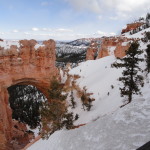 On Hot White Snow I’ve had a few microfiction madness experiences that leave the mind boggled:
On Hot White Snow I’ve had a few microfiction madness experiences that leave the mind boggled: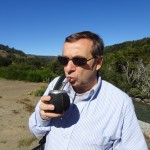 And here on Science Traveler we’ve taken a look at the science of the earthquake in Nepal and a whole host of other Lincoln and Tesla-related projects:
And here on Science Traveler we’ve taken a look at the science of the earthquake in Nepal and a whole host of other Lincoln and Tesla-related projects:


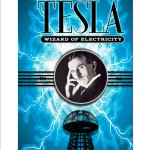 Busy day here in Tesla-land, but here’s a quick update on what is going on with Tesla: The Wizard of Electricity.
Busy day here in Tesla-land, but here’s a quick update on what is going on with Tesla: The Wizard of Electricity. Abraham Lincoln’s “few appropriate remarks” at Gettysburg on November 19, 1863, which we now know as the Gettysburg Address (i.e., “Four score and seven years ago today…”) is a major milestone in Lincoln’s historical legacy. Less remembered is that Lincoln was weak and dizzy as he rose to speak, with the symptoms intensifying on the train back to Washington. Back pains developed, and by the fourth day of being bedridden he experienced a scarlet rash, which soon became vesicular. Lincoln had virus-induced smallpox, or at least a less virulent form called variola or varioloid. Over the next three weeks, lesions appeared and worsened, finally drying and peeling. He remained in bed recovering for weeks.
Abraham Lincoln’s “few appropriate remarks” at Gettysburg on November 19, 1863, which we now know as the Gettysburg Address (i.e., “Four score and seven years ago today…”) is a major milestone in Lincoln’s historical legacy. Less remembered is that Lincoln was weak and dizzy as he rose to speak, with the symptoms intensifying on the train back to Washington. Back pains developed, and by the fourth day of being bedridden he experienced a scarlet rash, which soon became vesicular. Lincoln had virus-induced smallpox, or at least a less virulent form called variola or varioloid. Over the next three weeks, lesions appeared and worsened, finally drying and peeling. He remained in bed recovering for weeks.
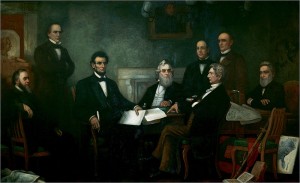 No doubt everyone in the Lincoln world has heard repeatedly about the document we’ve all come to know as the “blind memorandum.” But what about the “reveal party” when Lincoln showed his cabinet what he had written? That event happened on November 11, 1864.
No doubt everyone in the Lincoln world has heard repeatedly about the document we’ve all come to know as the “blind memorandum.” But what about the “reveal party” when Lincoln showed his cabinet what he had written? That event happened on November 11, 1864.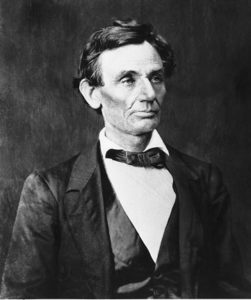 “I am not an accomplished lawyer,” Lincoln wrote in 1850 notes for a law lecture. Continuing in this unpretentious vein, he noted, “I find quite as much material for a lecture in those points wherein I have failed, as in those wherein I have been moderately successful.”
“I am not an accomplished lawyer,” Lincoln wrote in 1850 notes for a law lecture. Continuing in this unpretentious vein, he noted, “I find quite as much material for a lecture in those points wherein I have failed, as in those wherein I have been moderately successful.”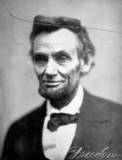 During the U.S. Civil War, there were some who advised Abraham Lincoln to postpone the 1864 election. He refused to do so, saying:
During the U.S. Civil War, there were some who advised Abraham Lincoln to postpone the 1864 election. He refused to do so, saying: Abraham Lincoln won reelection in 1864. Or so we remember. But the results may not be what they seem, and some of the states had questionable legitimacy. I’ll be discussing this topic in a new presentation scheduled for Tuesday, October 29, 2024.
Abraham Lincoln won reelection in 1864. Or so we remember. But the results may not be what they seem, and some of the states had questionable legitimacy. I’ll be discussing this topic in a new presentation scheduled for Tuesday, October 29, 2024.

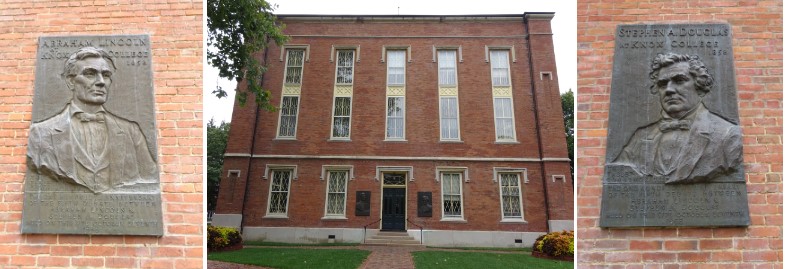 With the
With the 